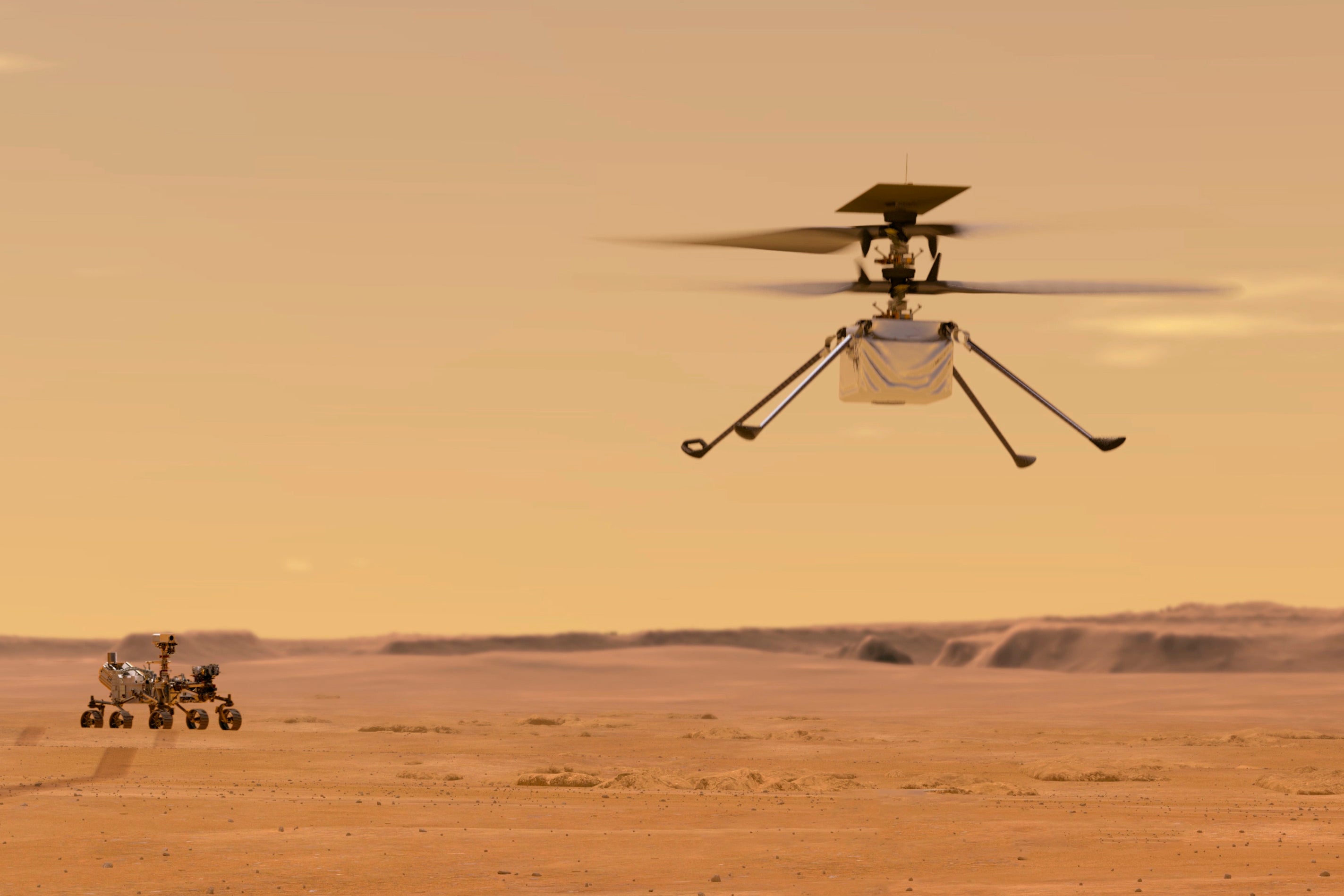Nasa unlocks Mars helicopter’s rotor blades ahead of pioneering Ingenuity flight

Your support helps us to tell the story
From reproductive rights to climate change to Big Tech, The Independent is on the ground when the story is developing. Whether it's investigating the financials of Elon Musk's pro-Trump PAC or producing our latest documentary, 'The A Word', which shines a light on the American women fighting for reproductive rights, we know how important it is to parse out the facts from the messaging.
At such a critical moment in US history, we need reporters on the ground. Your donation allows us to keep sending journalists to speak to both sides of the story.
The Independent is trusted by Americans across the entire political spectrum. And unlike many other quality news outlets, we choose not to lock Americans out of our reporting and analysis with paywalls. We believe quality journalism should be available to everyone, paid for by those who can afford it.
Your support makes all the difference.Nasa’s Ingenuity helicopter has unlocked its rotorblades ahead of a pioneering flight over the red planet’s surface.
The helicopter was dropped from the Perseverance rover in recent days and has successfully fended for itself on the Martian surface. Since then, engineers have been making preparations and ensuring that the helicopter is ready to fly.
It will begin its first test journey “no earlier” than 11 April, Nasa has said, and it hopes to conduct at least five flights before its month-long journey is over. After that it will be left on the surface, hopefully having successfully demonstrated the technology it was taken to Mars to test.
Before that happens, Nasa must ensure that the helicopter is ready to fly. The first of those jobs involved unlocking what it refers to as the “blades of glory”, taking them out of the position they were stored away in for the journey and ready to spin up into the air.
Now the space agency will begin with a slow-speed spin of the blades, without them getting fast enough to actually lift Ingenuity. That will mark the first time the helicopter has used them on the surface, and is another key step before taking it into the air.
Read more:
- Starship SN15 test dates set as SpaceX launches debris hotline
- Aliens would be ‘friendly but we can’t gamble on it’
- ‘WE COULD PROBABLY BUILD JURASSIC PARK,’ SAYS CO-FOUNDER OF ELON MUSK’S NEURALINK
- Nasa reveals Easter eggs hidden on Mars perseverance
- FACEBOOK WILL NOT NOTIFY THE HALF A BILLION USERS CAUGHT UP IN ITS HUGE DATA LEAK, IT SAYS
After that will come another step which will see the rotor blades sped up to the roughly 2,400 RPM speed that will be required to actually take off, though the helicopter will stay on the ground.
It will then conduct its first lift-off, taking off and hovering in the thin Martian atmosphere, before flying and landing itself.
That will mark the first time that any craft from Earth has conducted a powered or controlled flight on another planet.
The following test flights will see the craft fly further and higher across the surface, providing extra information on the performance of the helicopter.
Nasa will not conduct science experiments using Ingenuity. Instead, it is seen as a technology demonstration, checking designs that should inform the exploring spacecraft of the future.
Join our commenting forum
Join thought-provoking conversations, follow other Independent readers and see their replies
Comments